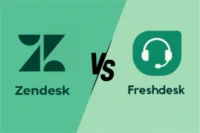Difference Between Von Neumann and Harvard Architecture
Published: 22 Jan 2025
When we talk about how computers work inside, there are two main ways they handle data and instructions: the Von Neumann and Harvard architecture. These two systems explain how computers are designed to store and process information.
Let’s explore the differences in a simple and easy way.
What is Von Neumann Architecture?
The Von Neumann architecture, named after John von Neumann, is a design used in most computers today.

What is Harvard Architecture?
The Harvard architecture is another way to design computers, often used in specialized devices.
Key Comparison: Von Neumann vs Harvard Architectures
Here’s a list of key comparisons below:
- Memory Structure
- Speed
- Complexity
- Usage
- Cost
Let’s dive into the main differences between these two architectures in more detail:
Memory Structure
Von Neumann Architecture: Uses a single memory system to store both instructions and data. Instructions and data are stored in the same memory unit. Accesses memory through one bus, shared for both tasks. Data and instructions are handled one at a time. Memory is unified, which simplifies the system’s design.
Harvard Architecture: Has separate memory units for data and instructions. Each memory has its own dedicated bus for access. Allows simultaneous access to data and instructions. Memory segregation improves processing efficiency. Design is more specialized and structured for tasks.
Speed
Von Neumann Architecture: Slower due to the shared bus for data and instructions. The CPU must wait for data or instructions if the bus is busy. Execution is sequential, leading to delays in processing. Performance decreases with larger data volumes. Bottleneck reduces efficiency during heavy workloads.
Harvard Architecture: Faster as data and instructions use separate buses. The CPU can fetch data and instructions at the same time. Ideal for real-time systems requiring high-speed performance. Parallel access reduces delays in execution. Handles large data volumes more efficiently.
Complexity
Von Neumann Architecture: Simpler design with fewer components. Uses a unified memory, minimizing hardware requirements. Easier to program and implement. Suitable for general-purpose computing tasks. Requires less expertise to develop and maintain.
Harvard Architecture: Complex due to separate memory systems. Needs additional hardware, increasing design intricacy. Requires more expertise for development and debugging. Suitable for systems requiring high speed and precision. Not ideal for beginners or simpler applications.
Usage
Von Neumann Architecture: Commonly used in general-purpose computers. Found in devices like PCs, laptops, and smartphones. Ideal for tasks requiring versatility and flexibility. Used in applications where cost is a key factor. Handles a wide range of computational tasks effectively.
Harvard Architecture: Frequently used in embedded systems and microcontrollers. Found in devices like washing machines, cameras, and robots. Ideal for real-time applications needing high precision. Used in specialized computing tasks, such as DSPs (Digital Signal Processors). Preferred in systems that prioritize speed and efficiency.
Cost
Von Neumann Architecture: Cheaper to design and manufacture. Requires fewer components due to unified memory. Suitable for budget-friendly and mass-market devices. Lower hardware costs make it widely accessible. Economical for a broad range of applications.
Harvard Architecture: More expensive because of additional hardware. Requires separate buses and memory systems, increasing cost. Targeted at systems where speed and precision justify the expense. Higher development and maintenance costs. Used in industries willing to invest in advanced technologies.
Why Do We Use Both Architectures?
Both architectures serve different purposes. Von Neumann is perfect for general tasks like using a laptop or a phone. Harvard architecture is ideal for specific, high-speed tasks, like controlling a washing machine or managing an airplane’s systems. By combining both in modern designs, computers can be more powerful and efficient.
Conclusion
Understanding the difference between Von Neumann and Harvard architectures helps us see how computers manage tasks. Von Neumann is great for everyday use, while Harvard is built for speed and efficiency in specific systems.
Each has its strengths and weaknesses, but together they help make technology better and more adaptable for our needs.
FAQs about Von Neumann and Harvard architecture
Here are some of the most Frequently Asked Questions related to Von Neumann and Harvard architecture:
Von Neumann architecture uses a single memory for both data and instructions, while Harvard architecture separates memory for data and instructions to improve performance.
Harvard architecture is faster because it can process data and instructions simultaneously, avoiding delays caused by shared memory paths.
It is more common because it is cheaper and simpler to design, making it suitable for general-purpose computers like PCs and laptops.
Harvard architecture is used in embedded systems, such as washing machines, microwaves, and robots, where high-speed processing is needed.
The bottleneck occurs because both data and instructions share the same memory path, which slows down processing when tasks increase.
Yes, modern computers often combine Von Neumann and Harvard architectures to balance cost, performance, and efficiency.
Harvard architecture is better for embedded systems because it offers faster processing and real-time performance for specific tasks.
It is slower because data and instructions must take turns using the same memory bus, creating delays during processing.
Yes, it is more expensive due to its separate memory systems and additional components, increasing design and manufacturing costs.
A real-life example is microcontrollers in home appliances like washing machines and microwaves, which rely on Harvard architecture for efficient operation.

- Be Respectful
- Stay Relevant
- Stay Positive
- True Feedback
- Encourage Discussion
- Avoid Spamming
- No Fake News
- Don't Copy-Paste
- No Personal Attacks

- Be Respectful
- Stay Relevant
- Stay Positive
- True Feedback
- Encourage Discussion
- Avoid Spamming
- No Fake News
- Don't Copy-Paste
- No Personal Attacks





